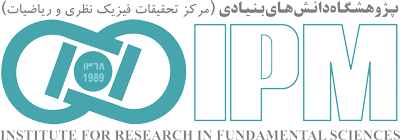“Papers of School of Cognitive Sciences”
Pages:
1
2
3
4
5
6
7
8
9
10
11
12
13
14
15
16
17
18
19
20
21
22
23
24
25
26
27
28
29
30
31
32
33
34
35
36
37
38
39
40
41
42
43
44
45
46
47
48
49
50
51
52
53
54
55
56
57
58
59
60
61
62
63
64
65
66
67
68
69
70
71
72
73
74
75
76
77
78
Analyzing the network of parent-rated ADHD symptoms before and 2 weeks after the onset of pharmaceutical treatment,
J Child Adolesc Psychiatr Nurs (2023), [abstract]
202. S. Modaberi, H. Amirteymori, S. Mesgar, K. Eskandari and A. Haghparast,
The blockade of orexin receptors within the dentate gyrus of the hippocampus attenuated methamphetamine-induced reward learning during conditioning place preference,
Pharmacology, Biochemistry and Behavior 226(2023), [abstract]
203. E. Yargholi, G. Hossein-Zadeh and M. Vaziri-Pashkam,
Two distinct networks containing position-tolerant representations of actions in the human brain,
Cerebral Cortex 33(2023), [abstract]
204. M.J. Shabani, H. Mohsenabadi, B. Gharraee, F. Shayanfar , V.P. Corcoran and D. McKay,
Psychological Correlates of Health anxiety in Response to the Coronavirus (COVID-19) Pandemic: a Cross-Sectional Online Study in Iran,
Int J Cogn Ther 16(2023), 103â??122 [abstract]
205. A. Pourmohammadi, A. Motahharynia , V. Shaygannejad, F. Ashtari, I. Adibi and M. Sanayei,
Working memory dysfunction differs between secondary progressive and relapsing multiple sclerosis: Effects of clinical phenotype, age, disease duration, and disability,
Mult Scler Relat Disord 69(2023), [abstract]
206. M. Nadian, S. Farmani and A. Ghazizadeh,
A novel methodology for exact targeting of human and non-human primate brain structures and skull implants using atlas-based 3D reconstruction,
ScienceDirect 391(2023), [abstract]
207. E. Noursadeghi and A. Haghparast,
Modulatory role of intra-accumbal dopamine receptors in the restraint stress-induced antinociceptive responses,
Brain Research (2023), [abstract]
208. R. Mozafari, S. Haghighi, M. Fattahi, P. Kalivas and A. Haghparast,
A review on the role of metabotropic glutamate receptors in neuroplasticity following psychostimulant use disorder,
ScienceDirect 124(2023), [abstract]
209. Z. Fatahi, M. Fatahi, M. Alizamini, A. Ghorbani, M. Zibaii and A. Haghparast,
Exogenous Cannabinoids Impair Effort-Related Decision-Making via Affecting Neural Synchronization between the Anterior Cingulate Cortex and Nucleus Accumbens,
Brain Sciences 13(2023), [abstract]
210. K. Eskandari, M. Fattahi, H . Yazdanian and A. Haghparast,
Is Deep Brain Stimulation an Effective Treatment for Psychostimulant Dependency? A Preclinical and Clinical Systematic Review,
Neurochemical Research 48(2023), [abstract]
back to top
Pages:
1
2
3
4
5
6
7
8
9
10
11
12
13
14
15
16
17
18
19
20
21
22
23
24
25
26
27
28
29
30
31
32
33
34
35
36
37
38
39
40
41
42
43
44
45
46
47
48
49
50
51
52
53
54
55
56
57
58
59
60
61
62
63
64
65
66
67
68
69
70
71
72
73
74
75
76
77
78



















